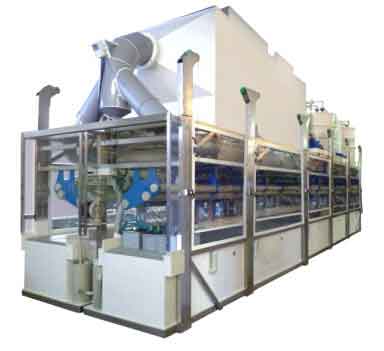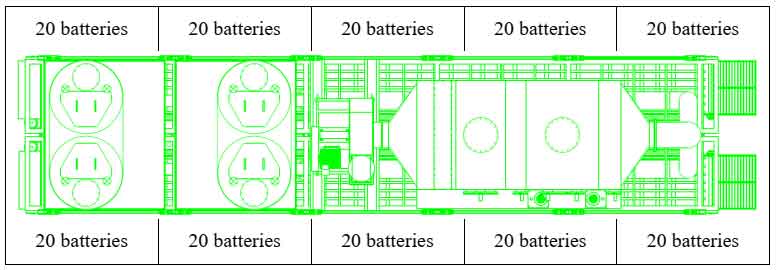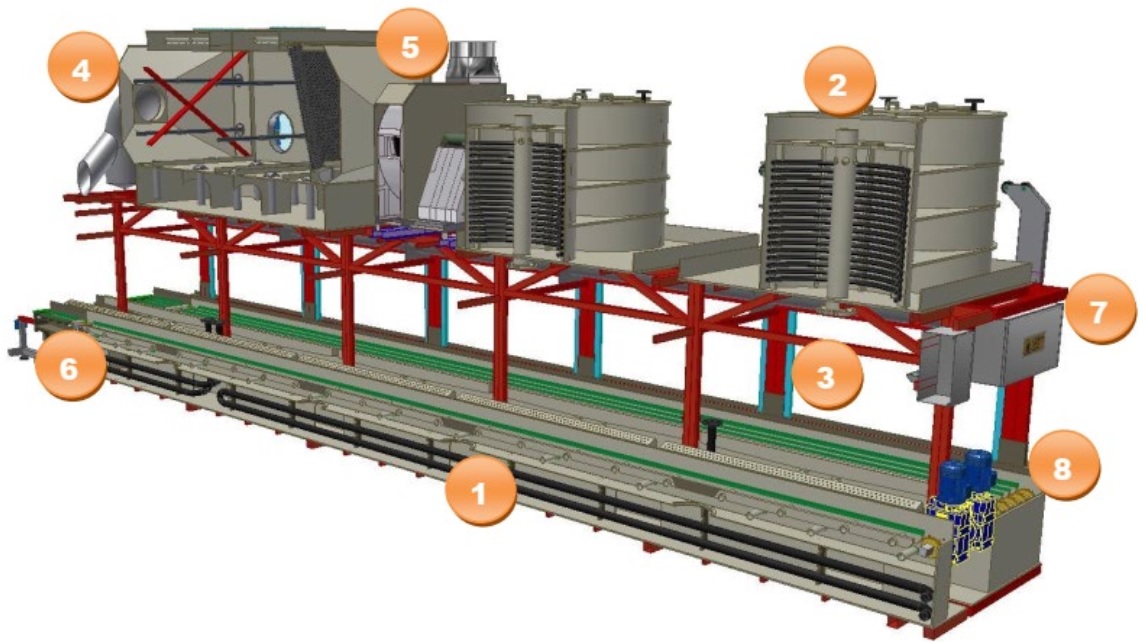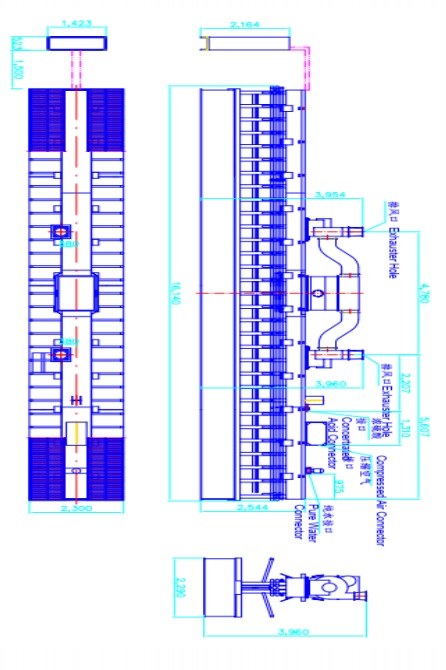BFRT – ACID RECIRCULATION FORMATION BENCH
The Acid Recirculation Formation Process is the best solution for the formation of all kind of flooded batteries.
The Process permits to maintain the correct temperature all over the plates inside the batteries, highly reducing the cycle time and increasing the quality of the formation process.
This process also increases the formation quality of your batteries, allowing to use a lower amount of Ah charged to the batteries to reach the quality standard you require, compared to your other formation system. Our clients have saved up to the 20% of current used to form their batteries, just by using our formation system.
Our equipment using the OMI Process is designed as a stand-alone unit, to give you a lot of advantages compared to any other kind of formation equipment present in the market. Some of the Advantages are:
• ACID PREPARATION, STORAGE, FILTRATION AND COOLING
For two different densities always available
• SCRUBBER
For the fumes aspiration and treatment
• FULL FLEXIBILITY
As all the circuits of the equipment are completely independent
• RECTIFIERS MANAGEMENT AND CONTROL
from the formation formula and the alarms
All those integration in our unit permits our customers to have:
• A BETTER CONTROL OF THE SYSTEM
• NO WASTE IN THE PROCESS
• FAST AND EASY INSTALLATION
• EASY MAINTENANCE
• HIGHER PRODUCTION with COSTS REDUCTION
GENERAL INFORMATION
The BFRT system is a bench manufactured with all the best materials, components and technologies present on the world market.
The Plastic arts are made in PPS and PP, and the Steel parts are made in Stainless Steel AISI 316L, all acid resistant.
The BFRT is available in different configurations, based on the customer requirements. For your requirements, here is our proposal:
The BFRT in this configuration has a capacity of 200 batteries Type A-B; 150 batteries type C.
The system, a stand-alone unit, has the following features:
• Two tanks and circuits for the independent preparation of two different acid densities (Low and High density). The preparation is made in automatic and in continuous from concentrated acid and water. No excess of acid is created by the system, and no manual activity is required.
• Gravity feed acid in the batteries, to make the recirculation of the acid. The system does not pump the acid in the batteries to make the recirculation, but only use the force of gravity to make the recirculation at a proper pressure (< 0,8 Liters/minute). A higher pressure means damaging plates and separators, or causing problems with paper. With our equipment these problems are absolutely avoided.
• Independency of the circuits, to have the maximum flexibility on your production schedule. Each circuit of batteries can have different battery type, independently if it is different from the other currently in production.
• Integrated motorized conveyor belts for an easy loading-unloading of the batteries from the bench. There are two conveyors (one on the left and one on the right) with independent motors, so you can load one side at a time to have a better flexibility of the system.
• Scrubber for the fumes aspiration and treatment with ventilator, to have emissions < 0,5 mg/m3, for a safe and better environment. The water from the scrubber tank is also re-used for the acid preparation, so it is not required to send it to any kind of treatment.
The bench is composed by (see the below sectioned example drawing):
1. Tanks for acid preparation and storage in PPS,
2. Upper feeding tanks in PPS for the filtration and distribution of acid to batteries, with containment wall,
3. Acid distribution pipes and valves in PP,
4. Scrubber on board for the treatment of the fume and for such the gas, the maximum quantity of SO4 that it emits is < 0,5 mgr/m3,
5. Ventilator for Scrubber,
6. Water tank for the scrubber,
7. Electrical panel with PLC for the logic control,
8. Motorized conveyor belt.
Stainless Steel 316L
PPS
Siemens
SMC/MetalWork
circa W 2700 mm; L 12000 mm; H 4500 mm
Structure body:
Plastics structure:
Logic components:
Pneumatics components:
Dimensions:
SEMI-AUTOMATIC LOADING AND UNLOADING SYSTEM
LOADING MOTORIZED CONVEYOR BELT WITH PNEUMATIC PUSHING SYSTEM
Motorized conveyor belt Width 600mm, for the batteries loading in the formation benches, frame in stainless steel AISI 316L, complete with a pneumatic pushing system for each bench side.
UNLOADING MOTORIZED CONVEYOR BELT WITH TROLLEY
Motorized conveyor belt Width 600mm, for the batteries unloading from the form ation bench, frame in stainless steel AISI 316L, complete with a trolley roller turntable, to be manually positioned in front of the bench side to be unloaded.
-OPTION: AUTOMATIC LOADING AND UNLOADING SYSTEM
-LOADING/UNLOADING MOTORIZED CONVEYOR BELT SUITABLE FOR SHUTTE
Motorized conveyor belt Width 600mm, for the batteries loading in / unloading from the OMI formation equipment, frame in stainless steel AISI 316L, complete with rails in tubular for shuttle guide, rack, and channel in stainless steel for the electrical chain support.
-SHUTTLE FOR LOADING
Shuttle for batteries automatic loading into the OMI formation equipment, complete with pneumatic pushing system, blockers, gearbox with auto-breaking motor, encoder and onboard electrical panel. Includes the electrical chain for the electrical and pneumatic supply.
-SHUTTLE FOR UNLOADING
Shuttle for batteries automatic unloading from the OMI formation equipment, complete with pneumatic pushing system, blockers, gearbox with auto-breaking motor, encoder and onboard electrical panel.
Includes the electrical chain for the electrical and pneumatic supply.
Option 2
APPLICATIONS
For 6V/12V flooded battery charging and formation.
The equipment includes
Dilute Acid tank.
Acid filter and conveying device.
Heat exchange device.
Acid cooling and collect device .
Battery Conveyor.
Water Spraying Safety Device.
Control system.
loading and unloading included with 2 worker.
Electrical controlling unit SIEMENS using the PLC(S7-1200) and touch screen to control the whole system, the system is reliable.
A computer automation system to be established requires the followings



